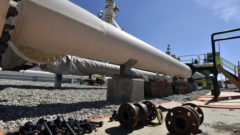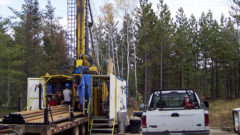A clean-energy project on Lake Erie faces stiff head winds because of warblers and waterfowl
The U.S.’s first freshwater wind farm is in limbo after regulators in Ohio told wind developers that they must do more to understand how their turbines will impact migrating birds. Environmentalists critical of the windfarm say that the stipulations to monitor bird and bat activity at the sites prior to installation is a critical step that should be the precedent for any wind turbines going on Lake Erie. Read the full story by Washington Post.
Great Lakes Commission
https://www.glc.org/dailynews/20200622-erie-wind





